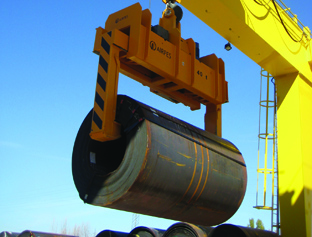System keeps Eagle eye on crane movements
16 August 2019Spain-based Airpes has launched its Eagle black box system, designed to monitor and log the hoist, trolley and bridge movements of high duty cycle cranes and hoists.
Airpes, a weighing systems and lifting equipment specialist, developed the Eagle to ensure safe lifting and use of cranes within the intended parameters. It joins the company’s AL series of overload devices.
The system can be installed in the control panel of new cranes, or retrofitted to existing cranes. It is manufactured to M8 standards, a duty rating covering 20 or more lifts an hour at or near the crane’s rated capacity.
The Eagle is particularly suited to cranes in medium- to heavy-duty environments such as steel mills, coil processing plants, steel service centres, precast cement factories, metals production, shipyards and ports. It could also be used for lower duty cycle applications where the load is very fragile or valuable, adds Airpes, for example in the aerospace or nuclear industries.
Tad Dunville, general manager at Airpes North America, said: “It is a multifaceted product with many features, but a holistic benefit is the input and output data it provides in relation to SWP [safe working period], which is the legally-mandated maximum run time before overhaul is required. Starts, cycle times, overloads, and so forth are all calculated to provide a comprehensive overview to increase productivity and throughput for cycle-conscious customers.”
While serving as an SWP controller to FEM 9.755, the Eagle can control up to four hoists, and features a load limiter with ten configurable outputs on 30 limits, as well as covering ten combinations of the sum of loads. Data captured includes number of overloads; number of weight cycling and accumulated total weight; register of the last 1,000 overloads with maximum weight, start date, time and duration; register of the last 10 weighings with maximum weight, start date and time; and estimates of the working group with number of cycles and maximum weight over time.
Dunville said: “In simple terms, the Eagle limits the hoist from picking up too much. But it can also control no-fly zones, where perhaps a section of runway isn’t rated as high as another or a customer doesn’t want a load carried near a particular machine. For example, if a crane loaded with a coil raised all the way up extends 10 ft. below the girder but the empty hoist only extends 5 ft. below the girder, that difference may cause contact with expensive plant fixtures and machinery. We can limit the crane to only travel in that area when unloaded or to completely nil travel in that area.”
